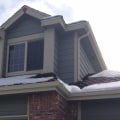Painting a house can be an exciting but challenging task, especially when trying to determine how much paint you will need. If you are planning to paint a 2,000 square foot house, estimating the correct amount of paint is essential to avoid unnecessary costs or running short in the middle of your project. Many factors influence the amount of paint required, including the type of surface being painted, the number of coats, and the quality of the paint. In this article, we will break down how to calculate the gallons of paint needed for a 2,000 square foot house and the factors that should be considered for a successful painting project.
How to Calculate Paint Requirements
The first step in determining how many gallons of paint are needed for a 2,000 square foot house is to calculate the total surface area you will be painting. While it may be tempting to assume that the square footage of the house will match the surface area to be painted, this is not the case. The total surface area includes the walls, ceilings, doors, and any additional features that require paint, while the square footage of the house refers to the size of the floor plan.
For an average single-story 2,000 square foot house with 8-foot ceilings, the walls alone could add up to roughly 800 linear feet of wall space. Assuming you are painting all four walls in each room, the height multiplied by the total linear feet of the walls gives you the approximate surface area. For a standard house, this usually equates to about 2,500 to 3,000 square feet of wall surface to paint, not counting ceilings, doors, or trim.
Factors Affecting Paint Requirements
Number of Coats: One of the biggest factors affecting the amount of paint you will need is the number of coats required. Most painting projects require at least two coats of paint for a professional-looking finish. The first coat acts as the base, while the second coat ensures full coverage and durability. If you are painting over a dark color with a lighter one, additional coats may be necessary to prevent the original color from showing through. A high-quality primer can reduce the number of paint coats needed and ensure better adhesion.
Type of Surface: The type of surface you are painting will also influence how much paint is required. For instance, porous surfaces like brick or unfinished drywall absorb more paint than smooth surfaces like finished wood or previously painted drywall. In such cases, you may need additional paint to achieve full coverage. On the other hand, surfaces that are already painted or sealed may require less paint.
Paint Quality and Coverage: Different brands and types of paint offer varying levels of coverage. High-quality paints often provide better coverage with fewer coats, meaning you will need less paint to complete your project. Generally, a gallon of paint covers about 350 to 400 square feet for a single coat on smooth, non-porous surfaces. However, cheaper paints or paints designed for specific purposes, such as exterior or high-traffic areas, may require more product for the same level of coverage.
Estimating the Amount of Paint Needed
Once you have considered the factors above, it’s time to calculate how many gallons of paint will be needed. As a general rule of thumb, you will need about one gallon of paint for every 350 to 400 square feet of surface area for a single coat. For a 2,000 square foot house with approximately 2,500 to 3,000 square feet of wall space, and assuming two coats of paint, you will likely need between 14 to 16 gallons of paint.
This estimate includes walls only. If you plan to paint ceilings, trim, doors, or other areas, you will need to adjust your calculations accordingly. For instance, ceilings typically add about 20% to the total surface area, meaning you will need an additional 3 to 4 gallons of paint if you are painting the ceiling as well. Trim and doors usually require a separate type of paint, such as semi-gloss or satin, and you may need an additional 2 to 3 gallons for these areas, depending on the design of the house.
Additional Considerations
If you’re unsure about how much paint you’ll need or if your project includes complex surfaces, it's always a good idea to consult a professional. They can help you accurately estimate the amount of paint required and provide tips for efficient application. Additionally, when taking on large-scale projects, remember that preparation is key. Proper surface preparation, including cleaning and priming, ensures that the paint adheres well and provides a long-lasting finish.
While calculating the exact amount of paint needed is crucial for budgeting and planning, don’t forget to take other factors into account, such as choosing eco-friendly paints or low-VOC (volatile organic compounds) products that contribute to a healthier home environment. For businesses and homes that undergo frequent maintenance, partnering with commercial cleaning services in Sydney can help keep freshly painted surfaces clean and pristine over time, preserving the quality of the work.
Conclusion
Painting a 2,000 square foot house requires careful planning and accurate estimation of the amount of paint needed. By considering the surface area, the number of coats, the type of surface, and the quality of the paint, homeowners can estimate that a project of this size will likely require between 14 to 16 gallons of paint for the walls alone, with additional paint needed for ceilings, trim, and doors. Proper preparation and attention to detail will help ensure a successful project, and seeking professional advice can further ensure you don’t over- or under-purchase supplies. Whether tackling the project yourself or working with a team of experts, knowing how to calculate paint requirements is an essential step in any painting endeavor.






